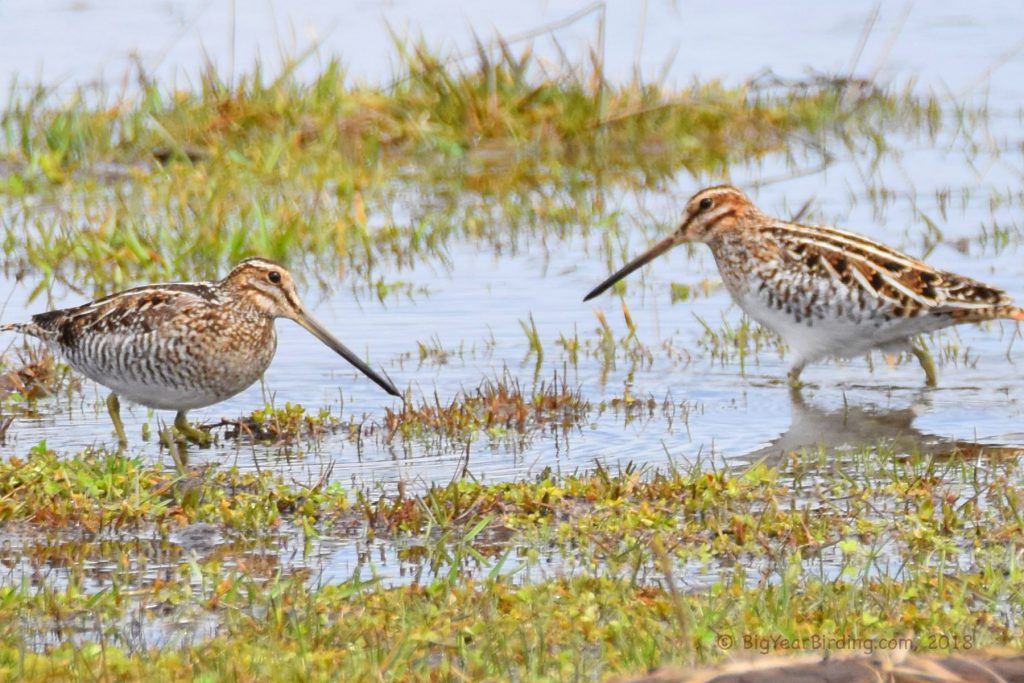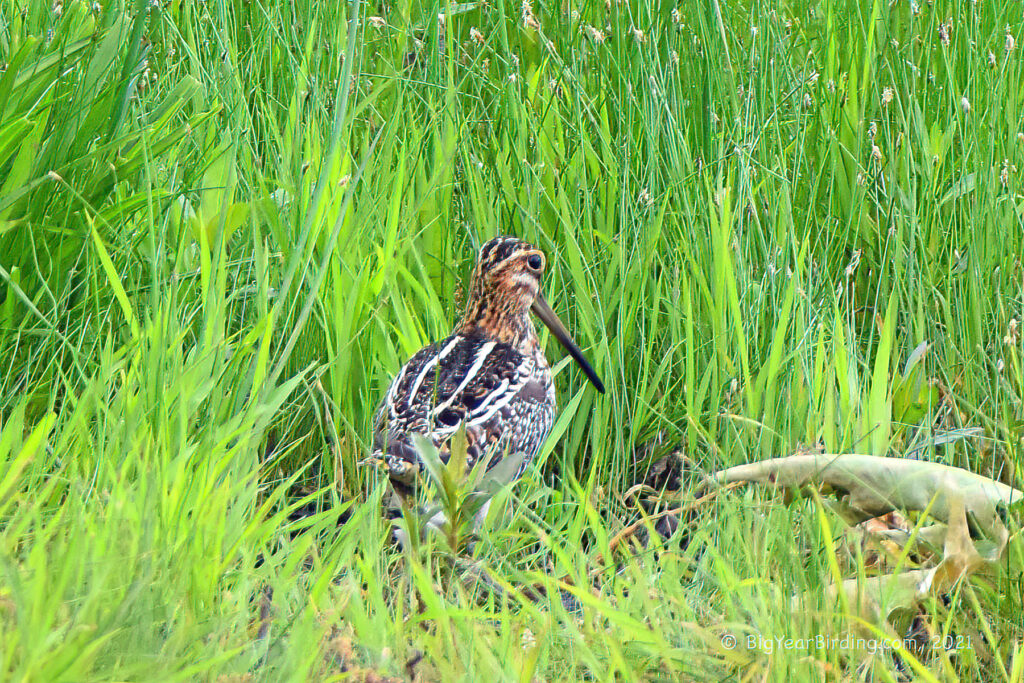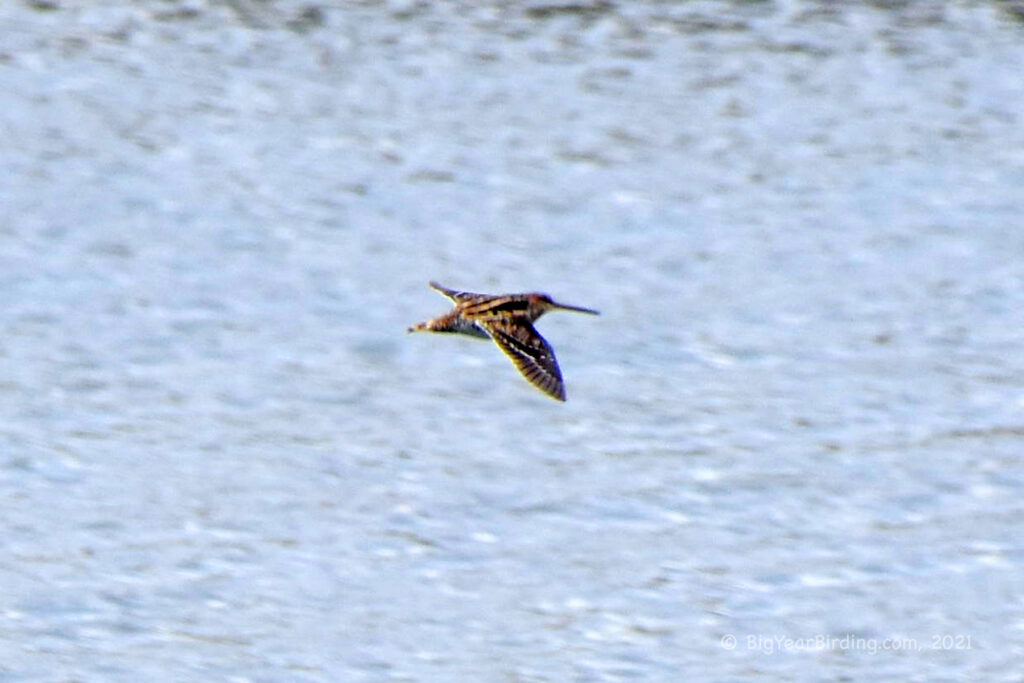
Wilson’s Snipe is a small, stocky bird measuring about 10-11 inches in length and weighing around 3.5 ounces. The bird has a distinctive long, straight bill that is almost as long as its head, which helps it probe for food in wetlands. The plumage of Wilson’s Snipe is mottled brown, black, and gray, with bold stripes on the back and wings. The bird’s underside is paler with buff-colored streaks. The bird’s tail is short and squared, and it has a white stripe on each side of the tail feathers.

One of the key distinguishing field marks of Wilson’s Snipe is its erratic, zig-zag flight pattern. The bird is also known for its distinctive vocalizations during its courtship display, which consists of a series of winnowing sounds made by the outer tail feathers as the bird descends in a steep dive. This sound is created by the air rushing through the bird’s feathers as it dives, and it can carry for long distances across open wetlands.
Wilson’s Snipe are migratory birds that breed across much of North America, from Alaska to Newfoundland, and southward into the northern parts of the United States. They are typically found in wetlands, marshes, bogs, and other areas with shallow water and dense vegetation. During migration, they can be found in a wide range of habitats, including coastal wetlands, agricultural fields, and other open areas with suitable foraging and roosting sites.
In the winter, many Wilson’s Snipe migrate to warmer areas of the southern United States, Central America, and the Caribbean. The migration patterns of Wilson’s Snipe can be quite complex and are influenced by a variety of factors, including weather patterns, food availability, and habitat quality. Some individuals may also migrate short distances within their breeding range in response to changing environmental conditions.

Overall, Wilson’s Snipe are fascinating birds with unique physical and behavioral adaptations that allow them to thrive in wetland habitats across North America. Their distinctive vocalizations and erratic flight patterns make them a favorite among birdwatchers, and their migratory habits are a testament to their resilience and adaptability in the face of changing environmental conditions.

